
Nestled at the foot of the iconic Table Mountain, Cape Town, the southernmost city on the African continent, is known by South Africans as the "Mother City", globally renewed for its rich and fascinating history. The city's plethora of exquisite hotels, sporting venues and fine dining restaurants attracts millions of tourists every year, while at the same time serving as a gateway to important historical sites like Robben Island, the notorious fortress where Nelson Mandela and his comrades were imprisoned for so long. But away from the scores of tourist traps and popular sites, the city is home to myriads of hidden gems, both culturally and naturally, serving as a refreshing breather from the swarms of the camera-armed vacationists.
If you’re remotely familiar with South African politics and geography, you’ve probably heard of townships. It’s the term used to refer to an underdeveloped, mostly informal and previously racially segregated urban area.
Historically, townships were characterized by endemic poverty, high crime levels and next to no access to state-provided services. They were built to house the black population deemed unworthy of a place in South Africa by the white ruling class, when the country was governed by the apartheid regime.
Today, townships have changed slightly, although they’re still largely deprived areas. As a tourist, it’s not advisable to just wander into a South African township unaccompanied, as crime is still much higher than elsewhere.
Visiting a township is an eye-opening experience and can be arranged with the help of a tour agency. Siviwe Township Tours and several other operators specialize in guiding visitors around the Langa township in Cape Town. You can get an authentic flavor of the community spirit and unique identity within the town.

Kids play in Langa Township
photography by: Anouk Pilon
While it has become a popular destination for those in the know, the streets of Woodstock don’t attract huge numbers of tourists, at least for the time being.
Located just outside of Cape Town’s CBD, the suburb of Woodstock has a somewhat transformational history. Once a pristine beach resort, it underwent rapid urbanization in the twentieth century and was riddled with crime and poverty. It became a no-go zone for South Africans and foreigners alike, such was its reputation for danger.
However, since the turn of the twenty-first century, Woodstock has undergone a renaissance. It is now the creative hub of the Mother City, with artist studios and independent coffee shops lining the streets.
A considerable part of its rebirth has been the street art that now adorns many residential and commercial properties in the suburb. With contributions from many artists with varying styles, walking the streets is like taking in an open-air art gallery.
You can also arrange a guided tour locally if you would like to get more information about the individual pieces that make up the art.

One of Woodstock's mesmerizing murals
photography by: Caroline Léna Becker
Cape Hangklip is situated in Pringle Bay, in the Overberg region of the Western Cape. It’s an hour and a half drive from Cape Town, but this family-friendly community is a lovely place to visit and enjoy the numerous restaurants and curio shops.
The bay is best known for the hanging rock (hangklip) that juts out to sea and marks the eastern edge of the adjoining False Bay. It is home to a nearly deserted beach exposed to the elements and many hidden caves that were once used by slaves who managed to escape from their Dutch masters.
Positioned out in the bay is Hangklip lighthouse, which has offered guidance to fishermen and sailors who venture into the choppy Atlantic waters since 1960. Walking down the beach and looking out to sea provides some beautiful photo opportunities, and you’ll probably not see another soul around.
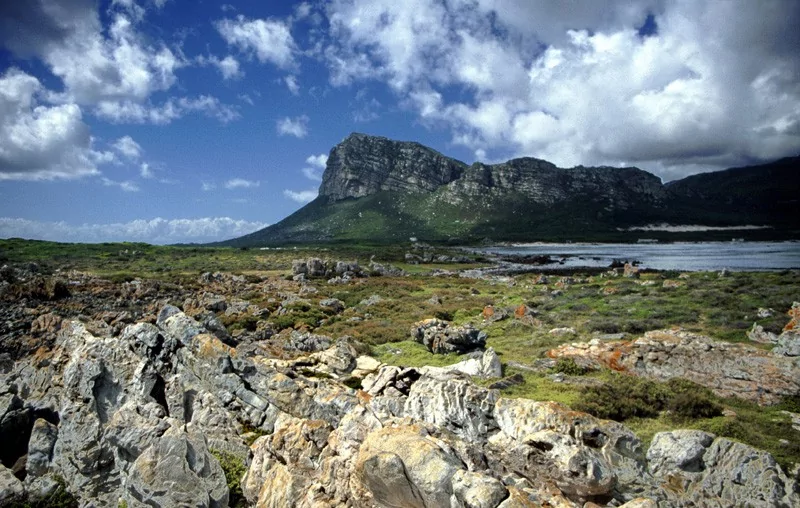
Cape Hangklip's expansive and breathtaking vista
photography by: John Charalambous
The existence of Rondebosch Common is an interesting story by its own right, as the state doesn’t own the land, but it is a donation of private land by Cecil John Rhodes, who granted it in his will to the people of Cape Town.
He desired that the land not be built upon and insisted that it should be allocated as a high-quality public space for the city’s residents. The land sits on 40 hectares of critically endangered Cape flats and serves as an essential nature reserve for local plant species.
Today, it is used in precisely the way that Rhodes desired. Locals frequently exercising and socializing within the common, and it provides a welcome escape from the urbanity of the nearby city.
The area is also an ideal picnic place on a pleasant day, marvelously accompanied by the views that reach out to Cape Town University and Table Mountain in the background.
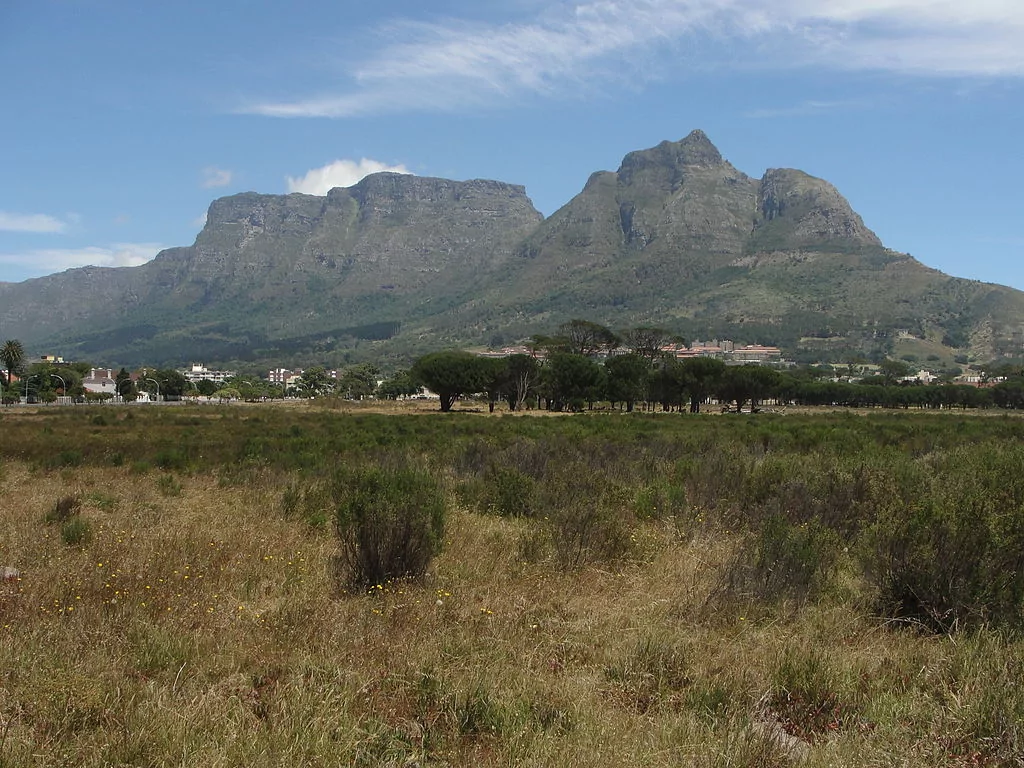
Rondebosch Common on the backdrop of Devil's Peak and the Table Mountain
photography by: Zaian
Nestled in the middle of the bustling city of Cape Town is Intaka Island, award-winning sixteen-hectare wetlands and bird sanctuary. The name Intaka is taken from the Xhosa language and means “bird”.
Like Rondebosch Common, Intaka Island is an excellent example of nature conservation amidst urban expansion and proves that nature and urban settlers can coexist.
The Island is home to more than 170 species of indigenous fynbos plants and 120 bird species, all of which provide a glimpse to the cape’s pristine nature prior to the arrival and settlement of humans.
There are both guided birding walks and boat trips, however, even if you merely wander around the paths and trails at your own pace, you’ll probably find it as a remarkable experience. All visitors are required to pay a small entry fee to visit, which goes into the Intaka Trust that exists to ensure the Island is sustainable into the future.
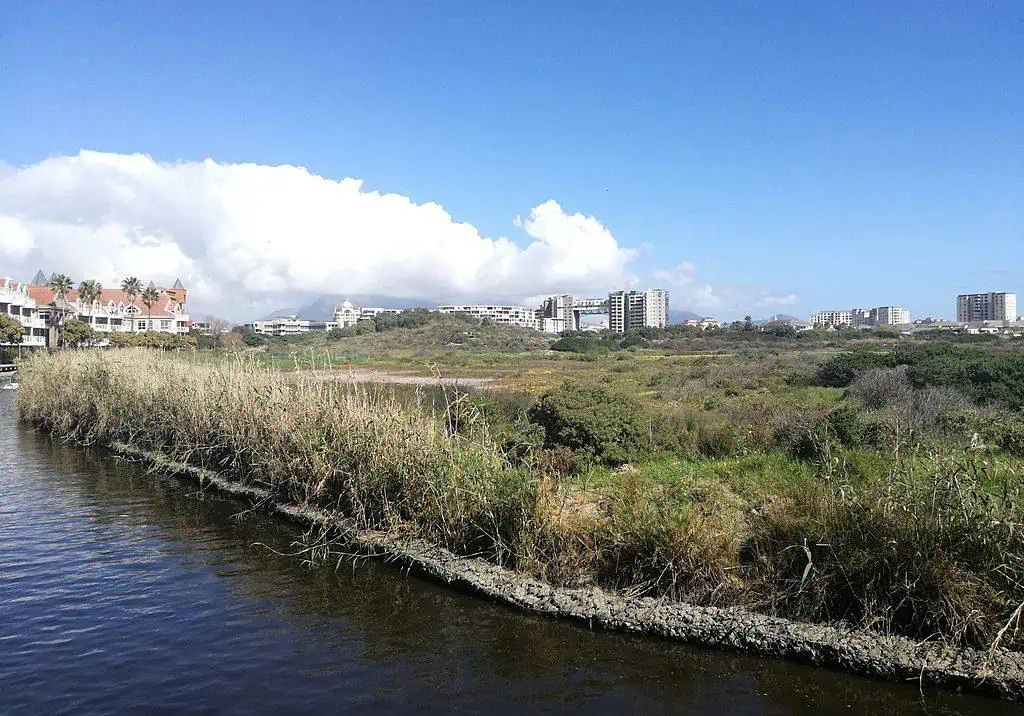
Intaka Island and its encroaching urban surroundings
photography by: S Molteno
One of Cape Town’s most scenic hike, Elsie’s trail is a relatively short route at only 2.5 kilometers, and although it’s steep in some places, it’s suitable for hikers of all ages and abilities.
It provides breathtaking views throughout the Table Mountain National Park and unrivaled vistas down to Simon’s Town, Fish Hoek, False Bay and Glencairn. The pathways winds through various types of terrains, most notably giant greyish rocks that come in all sizes and shapes. In fact, at a certain point, the trail turns into a passage surrounded by boulders while its outer edge faces a steep slope.
While you can undertake the walk at various times of the year, it’s best enjoyed when the weather is calm and the sun is bright. Additionally, as you will be aware, Table Mountain is often covered in cloud for large parts of the year, so walking through the National Park at a time when the views are uninhibited will create perfect photo opportunities.
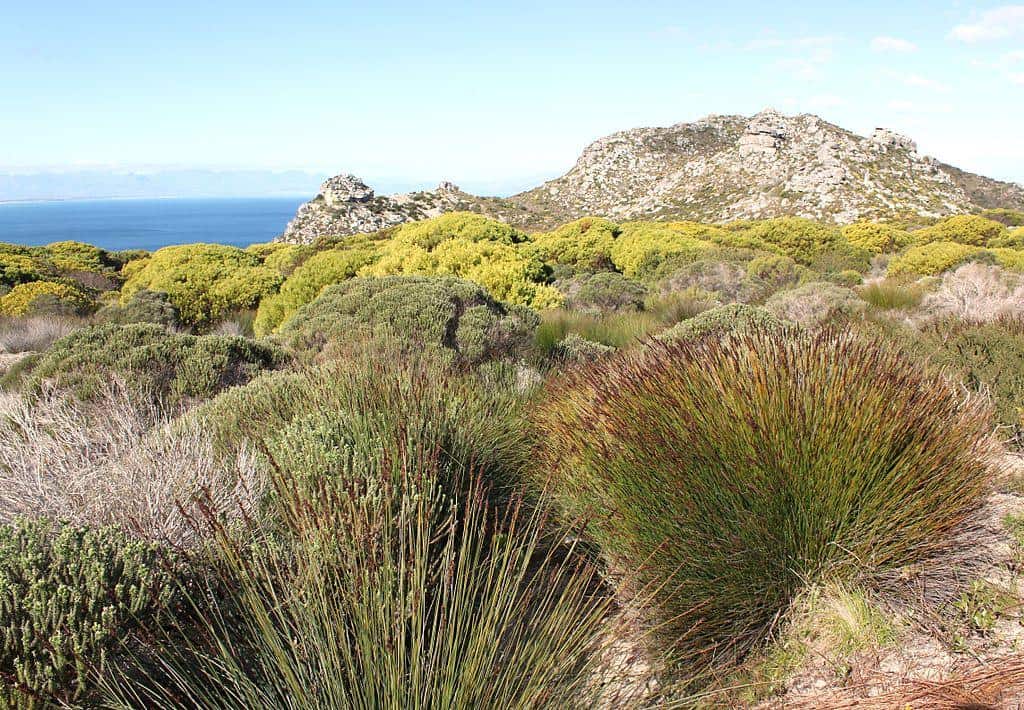
Abu Shawka
photography by: The unique endemic shrubs around Elsies Peak Hiking Trail
Situated in the northern suburbs of Cape Town, Tygerberg Nature Reserve is a vast site that covers 377 hectares and protects more than 560 species of plants. The reserve is also home to birds, reptiles, frogs and small mammals, many of which can be spotted from the various trails that traverse the wide-open spaces.
But like many other nature reserves in and around Cape Town, arguably the best thing about Tygerberg is the stunning panoramic views from its highest point. Due to its position in the north of the city, you can look down at sprawling Cape Town as far as the eye can see.
Within the reserve is the Kristo Pienaar Environmental Education Centre, a resource center with an extensive library and herbarium, providing some insights on the region’s endemic flora and fauna, designated for travelers who wish to learn more about what they visually experienced during their hike.
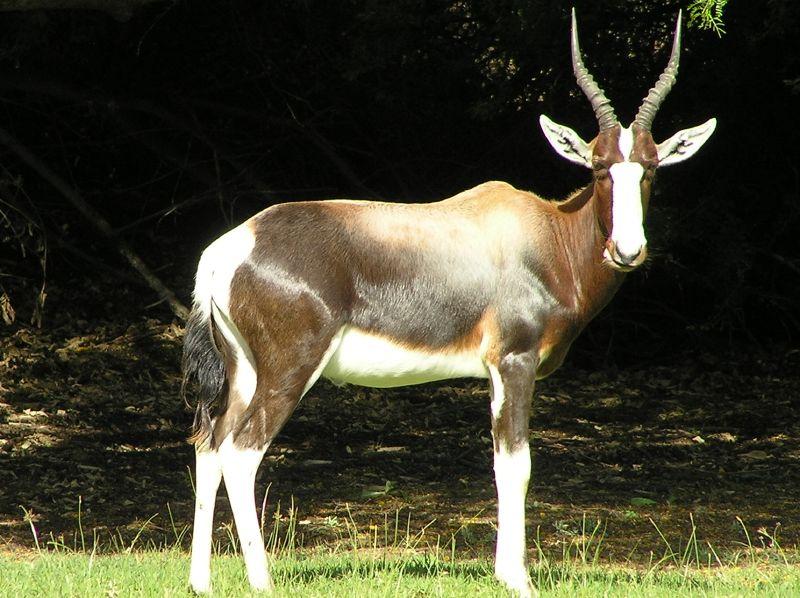
A buck grazing in Tygerberg Nature Reserve, one of many species who dwell in this pristine speck of land
photography by: MyAngelG
Often regarded as “Cape Point’s Most Deserted Beach”, Platboom is the perfect place to get away from your fellow tourists. It’s located within the Cape of Good Hope Nature Reserve and offers a natural experience like no other.
The golden sand that makes up the beach has been formed by the howling winds that batter the coastline, and only bird prints in the sand suggest that there have been other visitors here before you.
While you probably shouldn’t swim in the shark-infested, icy cold Atlantic water, there’s nothing wrong with dipping your feet in the surf and enjoying the sensation.
You will need to pay to enter the Cape of Good Hope Nature Reserve, but when you’re inside, the beach is all yours to explore. It’s an hour’s drive or so outside of Cape Town but is well worth the effort when you arrive.
Just don’t expect anything in the way of facilities or services when you arrive. Platboom beach is very much off the beaten track, so take your supplies and refreshments with you.
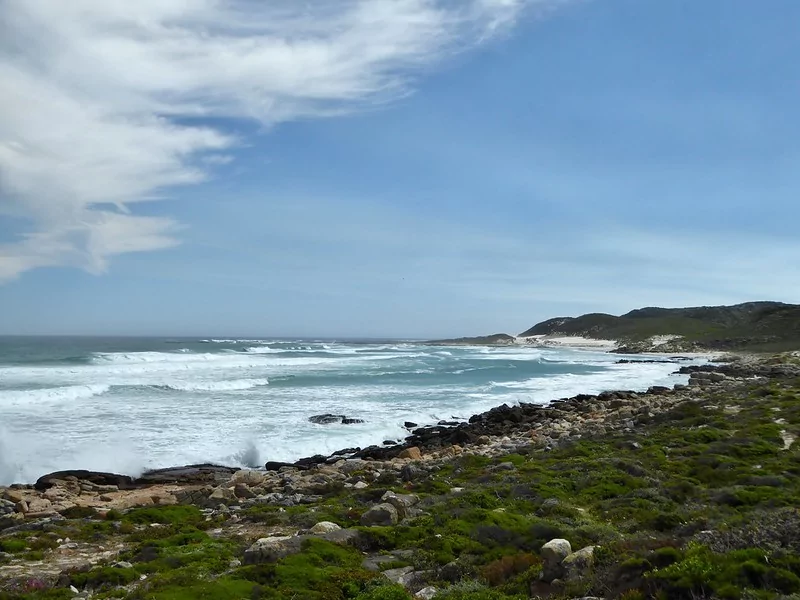
The secluded beach of Platboom
photography by: Regina Hart